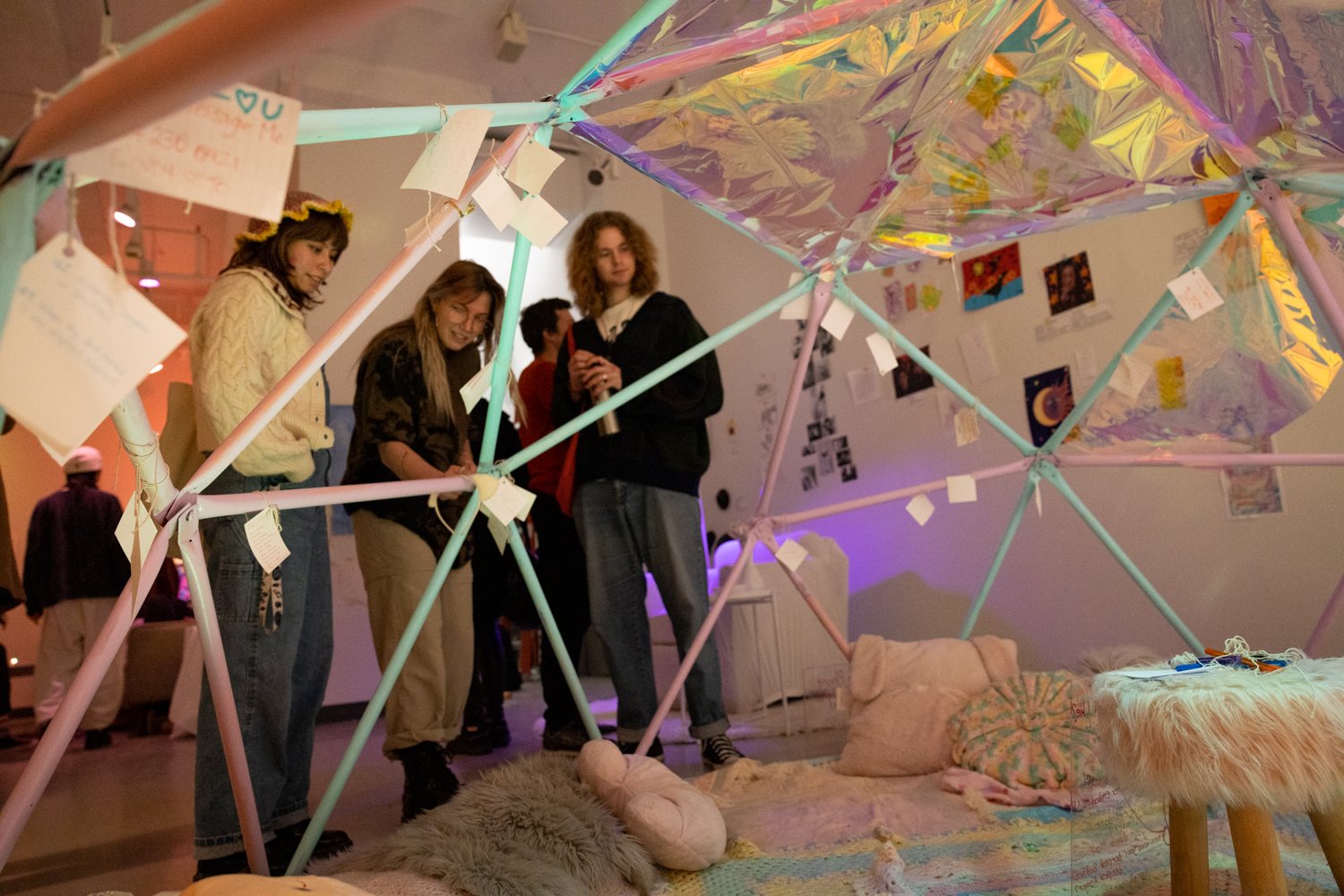
The Hatch Art Gallery wrapped up its latest exhibit, Our Space, on Wednesday. If you didn't get a chance to see it, the interactive exhibit aimed to disrupt conventional ideas of art galleries as secluded and esoteric spaces.
According to gallery director Sunny Park, the exhibit welcomed students “to work, read, create, communicate and share with one another, all while surrounded by a huge selection of student art.”
Even though the Hatch's walls were full of art, they were still quite bare, which helped to create a lighter effect and made the gallery a perfect spot to study or work in.
In addition to the artwork on display, the Hatch directors turned the gallery into a habitable space. Several lamps, in addition to overhead lights, provided a cozy, homey feel to the place. The couches were comfortable and were well-used throughout the exhibition. The furniture was neutral-toned and did not take the spotlight away from the art, but rather provided a restful space from which to appreciate it.
Park said that the exhibit meant to create “a space in which people could hopefully feel more comfortable navigating in; where people are invited to be as loud or as quiet as desired.”
A TV played videos on loop, while the other held a monitor with a simple yet beautiful video game. The game held appeal to those who enjoy minimal design and unpredictable storylines.
Another corner of the exhibit featured a large pastel, iridescent dome, filled with stuffed toys made by artist Bianca Thompson, where students could hang out or cuddle with their friends. Thompson described her artistic inspiration as asking, “What are all the things that make me happy? I’m going to put them all in one spot.”
Students interacted with the space in different ways. They wrote about their favourite feelings and tie those to the dome for visitors to read. The space also included a journal where students could write about their experience at the gallery, and a disposable camera for the visitors to take photos of themselves.
Jazz and chill indie music increased the sensory welcome of the space. In its brief exhibition period, the gallery became a space for students to come together and spend time as a community.


